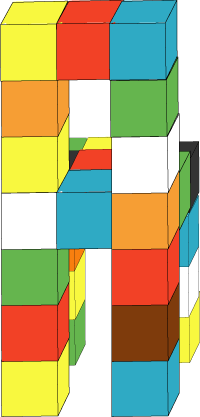where: in school
Here in Thailand, summer is over and we are back to school! We are kicking off the math games and exploration class today with an activity from NRich (chairs and tables) that has a surprising depth. Also, keep your eyes opened for the hidden reasons why we are starting with this activity.
Build a chair
The starting directive is simple: use unifix cubes to make a chair. Here's an example, from NRich:To start, we ask the kids to get 15 cubes each. What does 15 mean? How do they know they've got 15? Do they think they will need more or less than 15 to make a chair?
After they have built their chairs, how many did they need? If it was less than 15, how many are left over? If it was more than 15, how many more did they need to add?
Chairs for bears
Once we've all got one chair, can we make two more for the three bears from Goldilocks and the 3 Bears? We need a small one for baby bear, a medium sized one for mama bear, and a large one for papa bear.As the final construction challenge, we ask them to make a table sized to accompany their original chair.
Homework
- Based on the pictures above: (a) find out how many cubes would be needed to build these shapes, (b) draw a 2d perspective of one of the shapes from one direction.
- For those who have construction sets at home, try making chairs of different sizes. What things were similar to using the cubes at school, what was different?
Extension
Building off the three bears activity is a nice extension:- What is the smallest chair we could make? How many cubes do you use?
- How would you make the next larger chair? The next chair larger than that? How many cubes are used for those?
- What about the tenth chair in this sequence? What would it look like? How many cubes would we use to make it?
- Same questions for the 100th chair?
- What is an equation for the number of cubes in the nth chair?
Note: these questions follow the thinking of Fawn Nguyen's Visual Patterns.


No comments:
Post a Comment